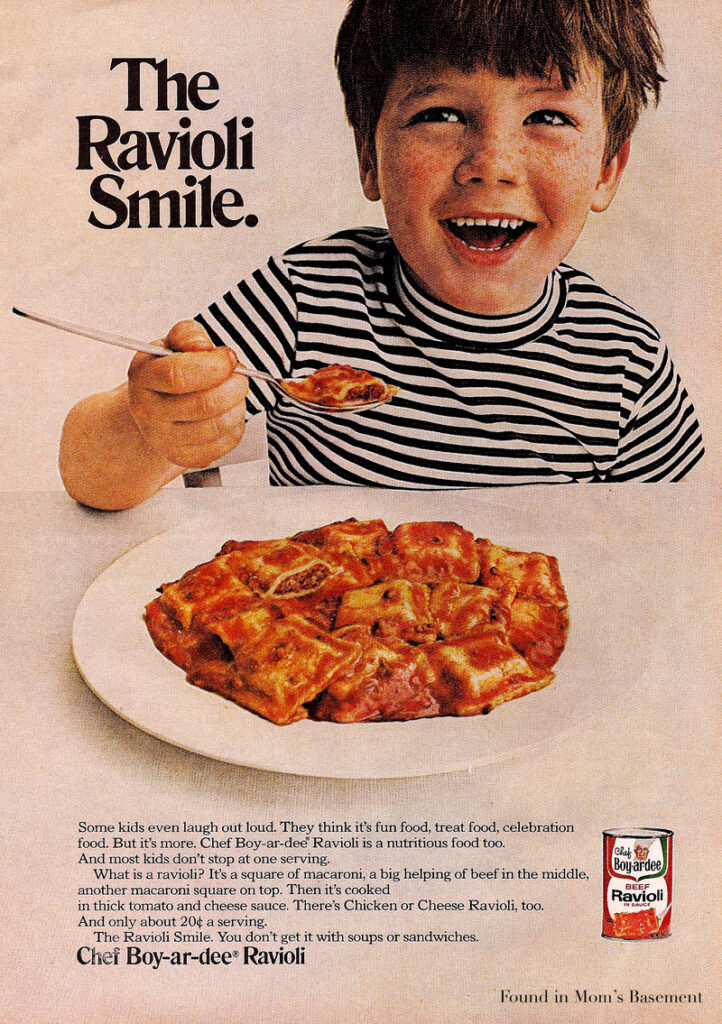Questions / Prompts
- How do images hold and convey meaning?
- How do we understand them?
- What are they trying to say?
- How do they persuade and influence us?
Reading Response 8
From my understanding of the excerpt by Roland Barthes, images themselves contain semiotic elements that can be found within both our spoken and written language. Elements such as signs, signifiers, and signifieds. It has become a different way to communicate a message. Even more so when a designer combines both the image and written language to create the message. Such messages use of an image holds two iconic messages that both are denotational of the objective reality and connotational of the subjective reality. Which gives the messages different meanings that can be understood such as the Panazni advertisement. Denoting the physical aspect with the use of the Panazni products while also connoting the cultural aspect that signifies Italy.
Another example that shows these elements would be this Chef Boyardee advertisement from the 70s. The denotative meaning or non-coded iconic message shows a young child smiling while eating a plate of Chef Boyardee’s ravioli. The connotative meaning otherwise known as the coded iconic message implies that because the child is eating Chef Boyardee that is the reason for them smiling. The added written language for the advertisement also tries to further direct the viewer to believe that the smile is caused by eating the ravioli.





Recent Comments